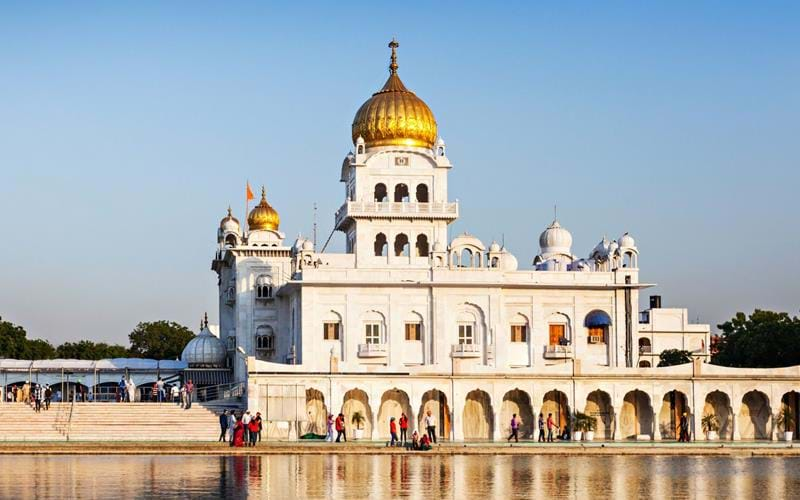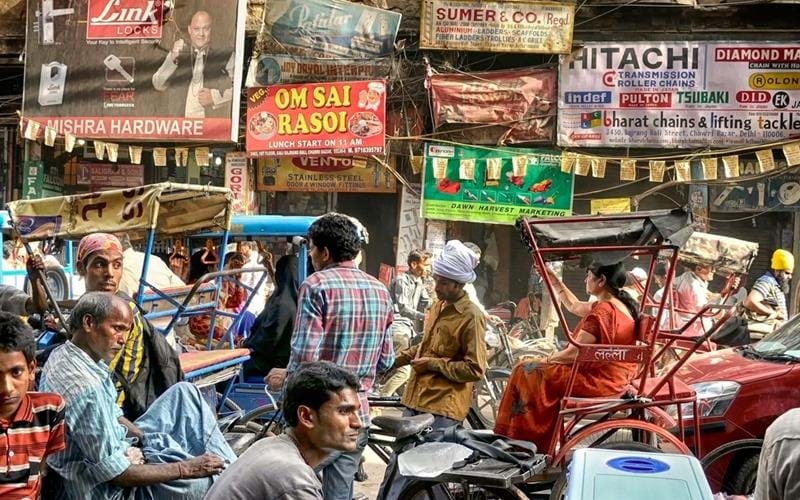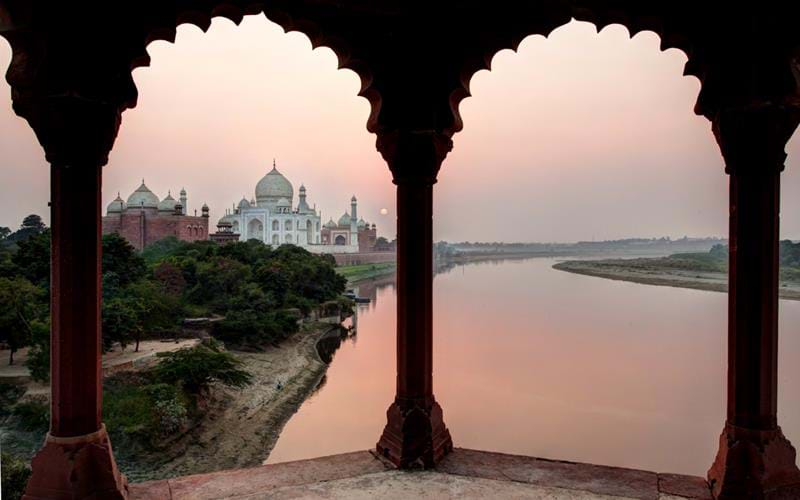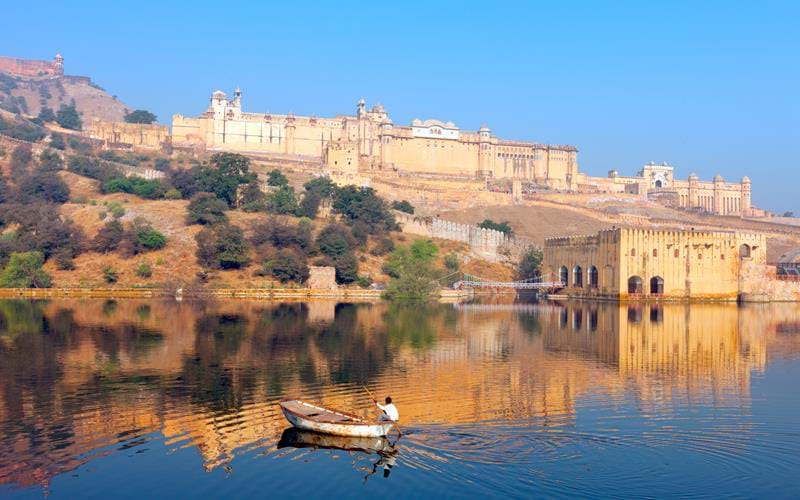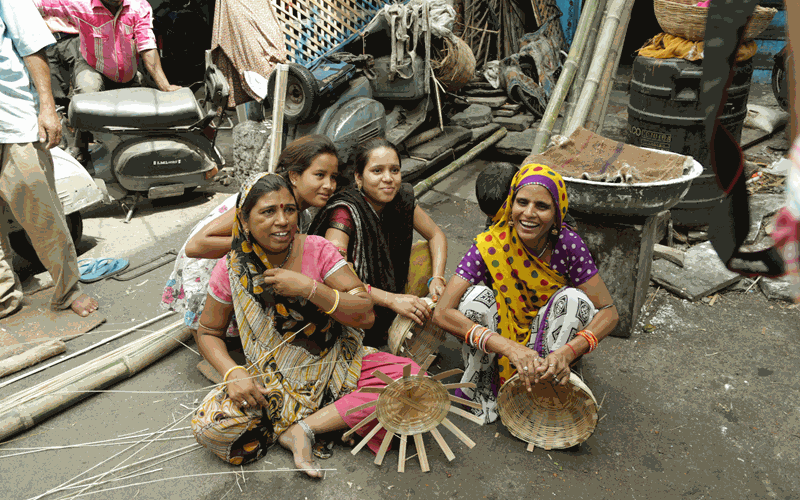One of the questions we’re most frequently asked by clients contemplating their first trip to India is ‘whether to go north or south’? This two-week…
View more
Covering the highlights of India’s popular ‘Golden Triangle’ region, this compact 9-day itinerary is designed for first-time visitors to India who wish to experience some of the country’s principal attractions in a relatively short time frame. It starts with a couple of days’ sightseeing in Delhi, followed by a stay in Agra to see the Taj Mahal and other Mughal treasures. Rajasthan’s vibrant capital, Jaipur, takes up the remainder of the trip, which ends with a half-day drive back to Delhi to catch the plane home.
This is a tailor-made tour, so the precise make-up of each day is decided by you, in consultation with one of our experts. Suggestions for the kind of experiences and activities on offer at each location are mentioned in the itinerary below.
Cultural Holidays Wildlife Holidays River Cruising Holidays Luxury Train Holidays Family Holidays Honeymoons Beach Holidays Adventure Holidays
Fly overnight to Delhi.
On arrival in Delhi, you’ll be met by your TransIndus guide and driver and transferred to your hotel for a two-night stay in the Indian capital. Spend the remainder of the day recovering from your journey with a leisurely swim in the hotel pool. Depending on the location of your hotel, you might also be able to visit a nearby tomb garden at sunset time, or go for a stroll at the Gurudwara Bangla Sahib, near Connaught Circus.
Made of white marble and crowned by a gilded onion dome, the Gurudwara Bangla Sahib and shimmering pool inside it are places of great sanctity for Indian Sikhs and offer the most atmospheric introduction possible to the capital. The complex in its present form dates from the late-18th century and was constructed at a place associated with the eighth Sikh Guru, Har Krishnan. At a Langar, or ‘canteen’ in the temple, pilgrims are fed nourishing, free meals of chapatis and black dal by volunteers. If you’re lucky, you may see groups of Akalis, members of a Sikh warrior sect, dressed in traditional ceremonial garb.
A full-day’s sightseeing today starts with a cycle-rickshaw ride or walking tour of Old Delhi, typically including the Jama Masjid mosque, the spice and silver bazaars of Chandni Chowk and imposing Red Fort. In the afternoon, visit Lutyen’s imperial capital, Humayun’s Tomb, and the spectacular Qutb Minar complex on the southern outskirts.
The narrow lanes of Old Delhi once formed the hub of the Mughal capital, formerly known as ‘Shajahanabad’ after the great Emperor Shah Jahan. Different streets are given over to different trades in this atmospheric district and before setting off, your guide will quiz you on your interests in order choose the sights most likely to inspire, whether street-food hot spots, crafts workshops or hidden architectural gems. Whatever your chosen itinerary, an obligatory stop should be the splendid Jama Masjid mosque, whose giant white domes dominate the skyline of the old city.
After admiring the extraordinary view from its minarets, enjoy a home-cooked lunch in a traditional Mughal-era haveli before heading across town to see the landmarks of the former British capital, inaugurated in 1931. Humayun’s Tomb, one of the India’s greatest early Mughal buildings, stands in manicured gardens a little further south and may be visited en route to the iconic Qutb Minar victory tower on Delhi’s southern outskirts, the day’s final stop.
After breakfast, drive via the new interstate highway to Agra to visit the city’s Mughal Fort and nearby markets, followed by sunset tour of the Taj.
Shah Jahan, the emperor who created the Taj Mahal, was imprisoned towards the end of his life by his son, Aurangzeb, in the gilded splendour of the Mughals’ great fortress-palace overlooking the Yamuna River – your first sightseeing stop of the day. Through its finely carved pillars and cusp-arched windows you’ll be able to savour the same romantic views as the ailing ruler enjoyed. On the opposite bank, the Itimad-ud Daulah tomb encloses the remains of his Prime Minister, or ‘Wazir’. The mausoleum’s famously intricate inlay work foreshadowed that of the Taj, which you’ll visit towards the end of the afternoon, when the changing light transforms the marble surfaces from a pale ochre to orange and crimson.
Drive in the morning to Fatehpur Sikri, the deserted former capital of the Mughal Emperor Akbar, then onwards to Jaipur, pausing on the way to visit one of India’s most impressive stepwells. You’ll arrive in the Rajasthani capital around mid-afternoon.
The first stop on the fifth day of your tour is the once splendid palace complex built at lavish expense at end of the 16th century to accommodate the Mughal emperor and his court. The finely carved, dark-red sandstone buildings were only inhabited for sixteen years and remain in superb condition, vividly evoking the opulence of the Mughal era, during which time India ranked among the richest and most culturally sophisticated countries in the world. During his sojourn here, Akbar gathered the finest artists, poets, calligraphers, musicians and dancers in the land, as well as representatives of its major faiths, whom he engaged in philosophical debates. Among many architectural highlights are the Diwan-i-Khas audience hall, with its ornately carved throne pillar, the beautiful white marble Tomb of Sheikh Salim Chishti (a revered Sufi mystic) and imposing Buland Darwaza gateway.
Just off the main Agra–Jaipur highway, the magnificent stepwell at Abhaneri is your second stop of the day. Comprising 3,500 carved steps spread over thirteen storeys, the well is the deepest and most intricate of its kind in India.
Most clients prefer to spend the rest of the day relaxing by their hotel pool on arrival in Jaipur, but when suitably refreshed we recommend an acclimatising visit to the city’s crowded, atmospheric market area or a drive up to Nahargarh Fort – one of India’s greatest sunset viewpoints.
Enjoy a full day’s sightseeing in Jaipur today, beginning with a trip out to Amber, followed by the Hawa Mahal, Janta Mantar Observatory and world-famous City Palace museum.
Perched on the rim of a dramatic escarpment, Amber Fort retains some of the finest interiors surviving from the 16th and 17th centuries in India, notably a glittering ‘Hall of Mirrors’, or ‘Sheesh Mahal’, lined with intricate mosaics where the Maharaja and his consorts would enjoy music and poetry recitals.
Jaipur itself is a swirl of life and colour, and its numerous Rajput monuments and markets provide the focus for the rest of the day. You’ll begin at the famous City Palace complex, which includes the much photographed ‘Hawa Mahal’, or ‘Palace of Winds’, a five-storey façade of elaborately screened windows from where the women of the royal household used to watch processions in the streets below. Treasures from the royal household are proudly displayed in the old pillared assembly halls below, and include jewels, weapons and regalia from Jaipur’s 18th-century heyday.
Spend the penultimate day of the trip doing some leisurely shopping and enjoying some of the unique experiences the city has to offer.
There’s really no better way to get a sense of life in the Rajasthani capital than a walking tour of the old walled quarter. We always recommend starting at first light, with a visit to a typical Jaipuri tea shop for chai and hot ‘jalebis’. Then follow your guide to see gem cutters, jewellers, perfumiers, flower vendors and sweet makers beginning their day, pausing at a local Hindu shrine or two along the way (there are an estimated 2,000 temples crammed into the Pink City). Later, consider a trip to Dera Amer, outside the city, for a walk with a pair of rescue elephants, Laxmi and Rangmala, or head into the jewellery bazaar with your guide to seek out some last-minute bargains. The bulk of the world’s semi-precious stones are cut and polished in Jaipur: choose from a dazzling array of lapis lazuli, amber, emeralds, rubies, sapphires and aquamarine, and have them set in silver or platinum for collection the next day. The Pink City is also a good place to buy fine-quality, hand-printed calicos and other textiles, as well as richly decorated, Mughal-style silk rugs and pashmina shawls woven in Kashmir.
You’ll have time for a final stroll around Jaipur’s old city before driving to Delhi in the afternoon, where you’ll check in to a hotel near the airport ahead your departure the following day.
With your guide, transfer by car to New Delhi’s Indira Gandhi International Airport for your flight home.
With the Summer almost upon us, now is the time to begin planning your next summer adventures in Asia. Our Travel Specialists are ready to take your call and discuss the adventure you have been dreaming of.
Or call us on 0208 566 3739
